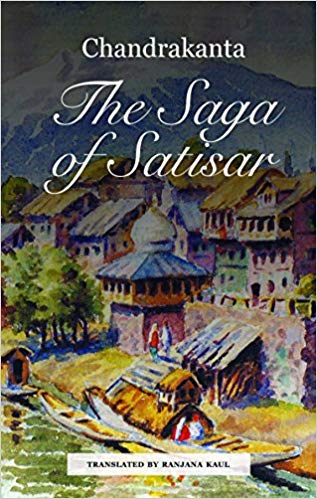The Saga of Satisar, a translation by Ranjana Kaul of Katha Satisar written by the well-known Hindi novelist Chandrakanta, is epic in scope and proportion. The narrative straddles three generations of several sprawling interrelated and interconnected Hindu and Muslim families of Kashmir. Rarely has any contemporary Indian novel attempted a narration of lives so vivid and richly evoked, ensconced within a sweep of the history and anthropology of a region presented with such a wealth of detail that it resembles Kashmiri tapestry woven with threads of multi-coloured hues and layered with minute design.
The visual richness of the novel casts a spell right from the first paragraph. Set in a Hindu Brahmin home in Srinagar of the 1930s, the opening scene at early dawn with scudding monsoon clouds on the horizon together with expectations of trouble from a political meeting later in the day is full of haunting possibilities. Krishnajoo and Saraswati have been up most of the night. Their seven months pregnant daughter Lalli is being sent to her in-laws’ home for the curd ceremony together with all the expected gifts to the different members of the household, her parents anxious about her safety and worried that the auspicious moment of her departure chosen by their pandit should not slip away. She is sent away in the care of her nurse Khurshid, the tongawallah Rehman and her cousin Nath, even as the clouds pour down rain and surly rioters threaten their safety a little later. Khurshid fends them away, but the reader understands from Rehman’s monosyllabic answers the demands of conflicted loyalties. Within a day, a few hours after Lalli reaches her father-in-law Ayodhyanath’s well-appointed home much to the relief of the extended family waiting for her and for the ritual, news is received of the brutal killing of Madhav, Ayodhyanath’s son-in-law, in the clashes ensuing the meeting.

